CoMiSS®
Symptoms related to cow's milk in childhood and cow's milk allergy
CoMiSS® is a simple, quick and easy-to-use awareness tool for cow's milk-related symptoms in infants.
Many infants present with symptoms that may be possibly related to cow's milk and suggest Cow's Milk Protein Allergy (CMPA).
CMPA is defined as a reproducible adverse reaction to one or more milk proteins mediated by IgE or non-IgE mechanisms. CMPA is one of the most common food allergies in children under 3 years of age.
The prevalence of CMPA is reported to be as high as 3%, but is highly variable depending on the country, region and diagnostic method used.1
CMPA is often not considered as a diagnosis, mainly due to the lack of a specific diagnostic marker.
CMPA can induce a diverse range of symptoms of varying intensity.2,3,4 Most infants with CMPA have ≥ 2 symptoms in ≥ 2 organ systems, including the respiratory and digestive systems and the skin.3
Approximately 50%–70% have cutaneous symptoms, 50–60% have gastrointestinal symptoms, and approximately 20–30% have respiratory symptoms.5
There are two groups of patients who present with symptoms suggestive of CMPA:
- •Those with immediate reactions (mostly IgE-mediated reactions), occurring within minutes to 1-2 hours after ingestion of cow's milk. This group is generally easier to recognize. Immediate symptoms may affect the skin (pruritus, hives, acute angioedema), the respiratory tract (wheezing, difficulty breathing), the circulatory system (hypotension/tachycardia in cases of anaphylaxis) and less commonly the gastrointestinal tract (vomiting and potentially diarrhea).
- •Those with delayed symptoms occurring hours to weeks after ingestion of cow's milk (mostly non-IgE-mediated). This group is generally more difficult to recognize, but represents the majority of infants with suspected cow's milk-related symptoms seen by primary care providers. These delayed reactions may affect the gastrointestinal system (vomiting, diarrhea, constipation, blood in the stool), the skin (atopic dermatitis, eczema) and general symptoms causing irritability, such as pain/discomfort after eating, chronic irritability/crying. In this case, circulatory symptoms are rare..
Why is it difficult to diagnose CMPA?
The diagnosis of CMPA can often be challenging because many of the symptoms commonly occur in healthy infants during their normal growth and development period.6
- • Crying, “colicky” infant
- • Difficult defecation or 2–3 loose stools per day
- • HFrequent regurgitation
- • Atopic dermatitis or eczema
In addition, non-IgE-mediated CMPA presents with delayed onset of symptoms, so it is not always immediately possible to associate the symptoms with cow’s milk intake.
Diagnosis requires a 2–4 week elimination diet and reintroduction of cow’s milk (i.e., an Oral Food Challenge, OCT) which is the gold standard7 but this is not always possible in clinical practice.
Other tests such as skin testing and specific IgE can be performed, but in many cases they are not sufficient alone to confirm the diagnosis.7
Was ist CoMiSS®?
The Cow’s Milk Symptom Score (CoMiSS®) was first developed by an internationally renowned group of experts in 2015 as an awareness tool for healthcare professionals to assess the presence of cow’s milk-related symptoms in infants.8Since 2015, 25 clinical studies have been conducted and published using CoMiSS® 9 Based on this new clinical evidence and years of experience, the international group of experts updated CoMiSS® in 2022.10.
- • CoMiSS® is a simple, quick and easy-to-use awareness tool for identifying symptoms related to cow’s milk, developed for use by primary care healthcare professionals
- • CoMiSS® allows the identification of the most common symptoms of CMPA that can help with an earlier diagnosis.
- • CoMiSS® can also be used to assess and quantify the progression of symptoms during a therapeutic intervention.
- • CoMiSS® is intended for use in infants under 1 year of age.
- • The tool is not intended for infants with severe and life-threatening symptoms that clearly indicate CMPA, including anaphylaxis, which requires urgent referral.
The CoMiSS® scoring form is not intended to be used as a diagnostic tool and should not replace an Oral Food Provocation Test (OPT). The diagnosis of CMPA can only be confirmed by a 2- to 4-week elimination diet followed by an OPT.
How to use the CoMiSS® awareness tool in clinical practice
CoMiSS® quantifies the number and severity of symptoms.
It assesses the suspicion of “cow’s milk-related symptoms” based on the presence of a combination of the following signs and symptoms, for a period of ≥ 1 week and in the absence of infectious disease:
GENERAL DISCOMFORTPersistent distress or infantile colic, measured by the level of crying in a clinical situation.
GASTROINTESTINAL SYMPTOMSFrequent regurgitation, vomiting, diarrhea, and constipation.
RESPIRATORY SYMPTOMSRunny nose, chronic cough, and wheezing.
DERMATOLOGISCHE SYMPTOME Atopic dermatitis (eczema), angioedema, and urticaria.
How to score symptoms in CoMiSS®
If symptoms related to cow's milk are suspected, evaluate the observed/reported symptoms by choosing the most appropriate score for each type of symptom.
Crying:
- •Crying is related to colic. Colic is defined as > 3 hours of crying/day for at least 3 days a week for at least 1 week.
- • The duration of crying should be assessed. The longer the crying, the higher the score.
- •Crying must be present at least 3 days/week for 1 week or more, as assessed by the parents, without any other obvious cause.
- •The score is related to the number of hours the child cries daily, e.g. up to 3 hours of crying/day will be equal to a score of 3.
- •The age range during which crying (due to colic) should be considered is between > 2 weeks and < 4 months.
| Score | |
|---|---|
| 0 | ≤0 ≤ 1 hour/day |
| 1 | 1 to 1,5 hours/day |
| 2 | 1,5 to 2 hours/day |
| 3 | 2 to 3 hours/day |
| 4 | 3 to 4 hours/day |
| 5 | 4 to 5 hours/day |
| 6 | ≥ 5 hours/day |
*In the absence of infectious disease.
Regurgitation:
| Score | |
|---|---|
| 0 | 0 to 2 episodes/day |
| 1 | ≥ 3 to ≤ 5 episodes of volume < 5 ml |
| 2 | > episodes of > 5 ml |
| 3 | > episodes of half the volume of the feed, in at least half of the feeds of the day |
| 4 | Continuous regurgitation of small volumes after +30 min of each feed |
| 5 | Regurgitation of more than half the volume of a feed, in at least half of the feeds of the day |
| 6 | Regurgitation of the complete feed after each feed |
- •The degree of regurgitation determines the score.11
- •Each score applies to a specific volume regurgitated and the severity of regurgitation.
- •Regurgitation also includes vomiting.
- •Regurgitation should only be considered if it has lasted ≥ 1 week and in the absence of infectious disease..
- •The age range during which regurgitation should be considered is between > 2 weeks and < 6 months./li>
* In the absence of infectious disease.
Stool:
The Brussels Infants and Toddlers Stool Scale (BITSS) is used to assess stool consistency for infants under 1 year of age 12
- •Types 1, 2 and 3 indicate hard stools
- •Type 4 are formed stools
- •Types 5 and 6 indicate loose stools
- •Type 7 indicate liquid stools
Gastrointestinal symptoms and stool changes should only be considered if they have lasted ≥ 1 week and in the absence of infectious disease.
| Score | |
|---|---|
| 4 | Type 1, 2 and 3 (hard stool) |
| 0 | Type 4 (formed stool) |
| 4 | Type 5 and 6 (loose stool) |
| 6 | Type 7 (liquid stool) |
* In the absence of infectious disease.
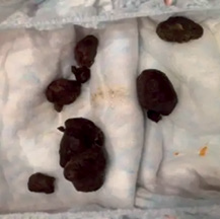
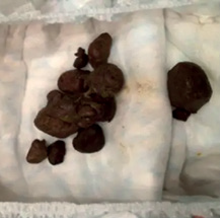
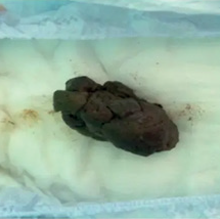
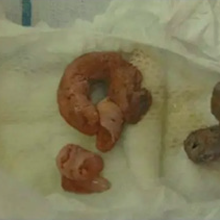
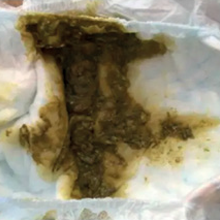
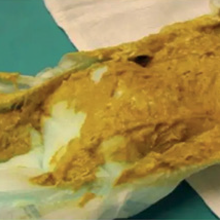
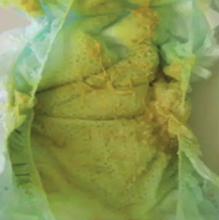
Skin:
| Score | Atopic Eczema (≥ 1 week duration) |
Head-Neck-Trunk | Arms-Hands/Legs-Feet |
|---|---|---|---|
| 0 | Absent | 0 | 0 |
| 1 | Mild | 1 | 1 |
| 2 | Moderate | 2 | 2 |
| 3 | Severe | 3 | 3 |
- •An easy-to-apply score based on an estimate of the surface area covered by dermatitis, using burn surface area estimation drawings
- •Atopic eczema should only be considered if it has lasted ≥ 1 week.
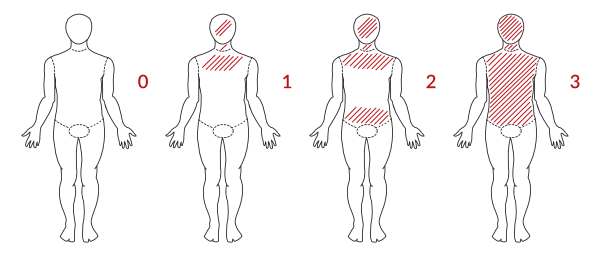
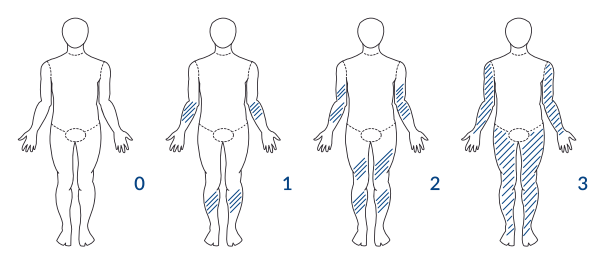
Estimated surface area:
0 = 0 | < 1/3=1 | 1/3-2/3 = 2 | > 2/3 = 3
- • If urticaria/angioedema can be directly related to cow's milk (e.g. drinking milk in the absence of other foods), this is strongly suggestive of CMPA.
- • Worsening eczema may be indicative of CMPA.
| Score | (Acute) Urticaria* | No | Yes |
|---|---|---|---|
| 0 a 6 | and/or Angioedema* | 0 | 6 |
Respiratory:
| Score | |
|---|---|
| 0 | No respiratory symptoms |
| 1 | Mild symptoms |
| 2 | Moderate symptoms |
| 3 | Severe symptoms |
Respiratory symptoms are considered in CoMiSS®, but they do not have the same weight as other symptoms. This is because respiratory symptoms can be caused by cow's milk, but most of the time chronic cough, runny nose and even wheezing are caused by viral infections.
The symptoms to be considered are*:
- • Chronic cough
- • Runny nose
- • Wheezing
For a period of ≥ 1 week
* In the absence of infectious disease.
CoMiSS® Total Score Interpretation
CoMiSS® scores from 0 to 33.
Each symptom has a maximum score of six, with the exception of respiratory symptoms (maximum score of three).
- •Total ≥ 10: If the CoMiSS® total score is ≥ 10, this may suggest symptoms related to cow’s milk. This could potentially be CMPA.
- •Total < 6: If the CoMiSS® total score is < 6, the symptoms are unlikely to be related to CMPA. Look for other causes.
A score of 10 requires the presence of at least two severe symptoms, and a score greater than 10 requires the presence of at least three symptoms and the involvement of two organs.
What's different about the new, updated CoMiSS®?
The main updates to CoMiSS® are:10
- • The overall cut-off score has been reduced to ≥10 (from ≥12), which is suggestive of CMPA.
- • The Bristol Stool Scale has been replaced by the Brussels Infant and Toddlers Stool Scale (BITSS), which better reflects stool consistency in non-toilet-trained infants.
- •Clearer guidance is provided to healthcare professionals to identify those infants for whom the tool is not intended and those who require immediate referral, such as infants with anaphylaxis, failure to thrive and sick infants with haematochezia.
1. Flom JD and Sicherer SH. Epidemiology of Cow’s Milk Allergy. Nutrients. 2019;11(5):1051.
2. Koletzko S, Niggemann B, Arato A, et al. Diagnostic approach and management of cow’s-milk protein allergy in infants and children: ESPGHAN GI Committee practical guidelines. J Pediatr Gastroenterol Nutr. 2012;55(2):221–9.
3. Fiocchi A; World Allergy Organization (WAO), Food Allergy. 2017. Available from: http://www.worldallergy.org/professional/allergic_diseases_center/foodallergy
4. Høst A and Halken S. A prospective study of cow milk allergy in Danish infants during the first 3 years of life. Clinical course in relation to clinical and immunological type of hypersensitivity reaction. Allergy. 1990;45(8):587–96.
5. Vandenplas Y, Brueton M, Dupont C, et al. Guidelines for the diagnosis and management of cow’s milk protein allergy in infants. Arch Dis Child. 2007;92(10):902–908
6. Munblit D, Perkin M.R, Palmer, D.J, Allen K.J, Boyle R.J. Assessment of evidence about common infant symptoms and cow’s milk allergy. JAMA Pediatr. 2020, 174, 599–608.
7. Muraro A, Werfel T, Hoffmann-Sommergruber, et al. EAACI Food Allergy and Anaphylaxis Guidelines: diagnosis and management of food allergy. Allergy. 2014;69(8):1008–1025.
8. Vandenplas Y, Dupont C, Eigenmann P, et al. A workshop report on the development of the Cow’s Milk-related Symptom Score awareness tool for young children. Acta Paediatr. 2015 Apr;104(4):334-9
9. Bajerova, K, Salvatore S, Dupont C et al. The Cow’s Milk-Related Symptom Score (CoMiSS™): A Useful Awareness Tool. Nutrients 2022, 14, 2059.
10. Vandenplas Y, Bajerova K, Dupont C, et al. The Cow’s Milk Related Symptom Score: The 2022 Update. Nutrients 2022, 14, 2682.
11. Vandenplas Y, Hachimi-Idrissi S, Casteels A, et al. A clinical trial with an “anti-regurgitation” formula. Eur J Pediatr.1994;153:419-23.
12. Huysentruyt K , Koppen I, Benninga M, et al; BITSS working group. The Brussels Infant and Toddler Stool Scale: A Study on Interobserver Reliability J Pediatr Gastroenterol Nutr. 2019 Feb;68(2):207-213.
